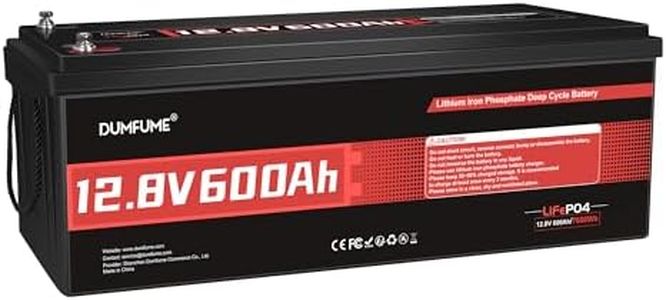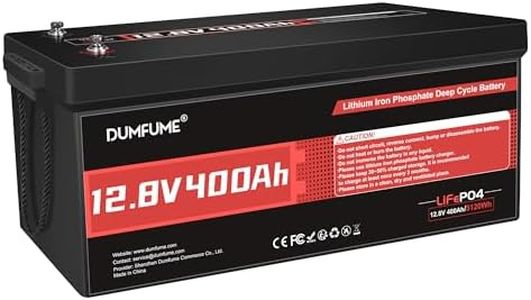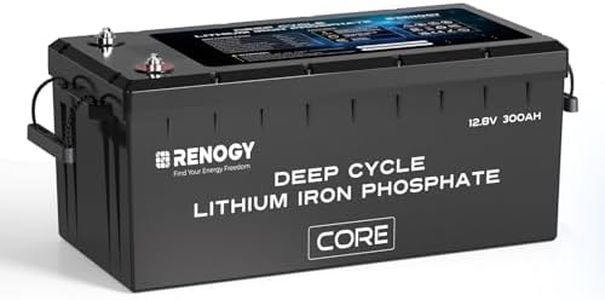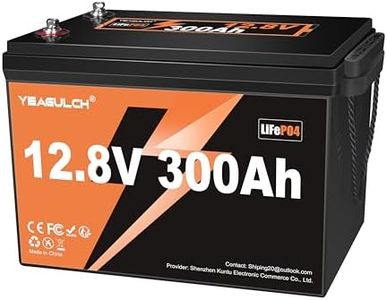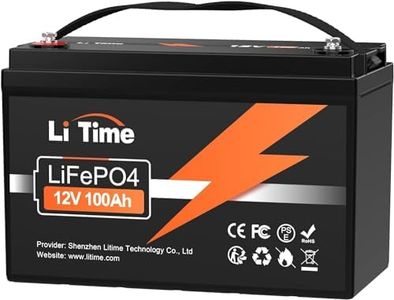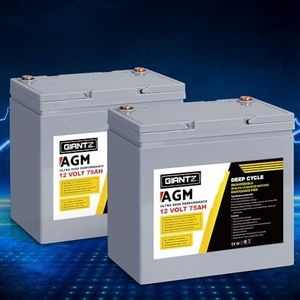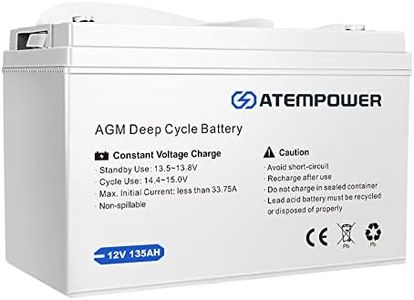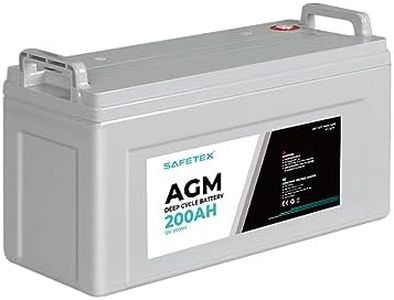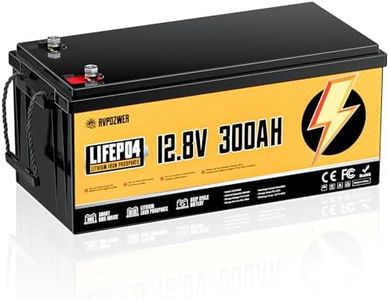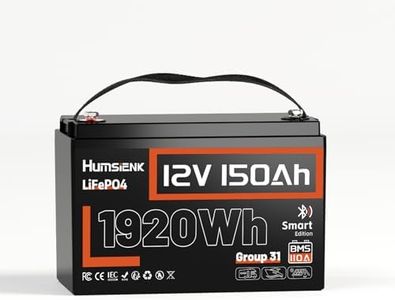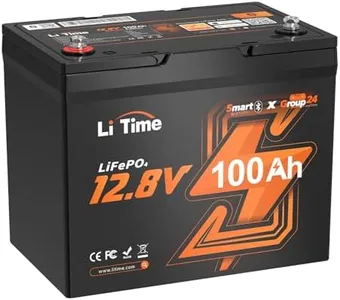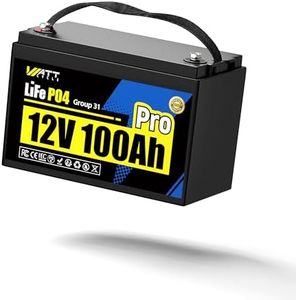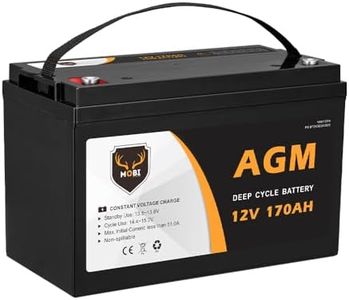We Use CookiesWe use cookies to enhance the security, performance,
functionality and for analytical and promotional activities. By continuing to browse this site you
are agreeing to our privacy policy
10 Best Deep Cycle Batteries For Trolling Motors
From leading brands and best sellers available on the web.Buying Guide for the Best Deep Cycle Batteries For Trolling Motors
When choosing a deep-cycle battery for your trolling motor, understanding the key specifications can make a big difference in performance and satisfaction. Deep-cycle batteries are designed to provide steady power over long periods and can handle regular draining and recharging. Paying attention to the right specs will ensure you get a battery that fits your boating style, fishing habits, and the requirements of your trolling motor.Battery TypeThe main types of deep-cycle batteries are Flooded Lead Acid (wet cell), Absorbed Glass Mat (AGM), and Lithium Iron Phosphate (LiFePO4). This specification is important because it affects maintenance, lifespan, weight, and cost. Flooded batteries are affordable and reliable but need regular checks and topping off with water. AGM batteries are more resistant to vibration and require little to no maintenance, making them a popular middle ground. Lithium batteries are lightweight, have a long lifespan, and offer fast charging, but they are substantially more expensive. If you want minimal maintenance and long life, AGM or lithium might suit you. For occasional use or if you don’t mind regular care, flooded batteries are fine.
Capacity (Amp-Hours, Ah)Capacity, measured in amp-hours (Ah), indicates how much energy the battery can store and provide over time. Higher capacities let you run your trolling motor for longer before recharging. For light use or short outings, a battery with lower Ah, like 50–80Ah, may be enough. For all-day fishing, larger boats, or heavier power draw, look for batteries with 100–130Ah or even more. Choose based on how long you typically need your trolling motor to operate without recharging; the more demanding your outings, the higher the capacity you’ll want.
VoltageVoltage describes the electrical potential the battery provides. Most trolling motors are designed to work with 12V, 24V, or 36V systems. This is important because your motor and battery voltages must match. For smaller motors and boats, 12V is usually sufficient. For more power or larger boats, you may need a series of batteries to achieve 24V or 36V. Always check your motor’s requirements and pick batteries that add up to the right voltage for safe and effective operation.
WeightThe weight of a deep-cycle battery can range from manageable to quite heavy, especially as capacity increases. This matters for handling, installation, and how your boat sits in the water. Lighter batteries, such as lithium types, are ideal if you need to carry batteries frequently or if boat weight is a concern, while heavier batteries may be less expensive but might slow you down or affect your boat’s balance. Consider your strength, your boat’s size, and storage space when deciding how much battery weight you’re comfortable with.
Cycle LifeCycle life means how many discharge-recharge cycles the battery can handle before its performance drops significantly. Higher cycle life means better long-term durability. Flooded lead acid batteries may offer a few hundred cycles, AGM batteries tend toward more, and lithium batteries can handle thousands. Frequent, heavy use makes high cycle life important, while occasional use may not require a battery with the longest lifespan. Match this spec to how much and how often you fish or boat.
Maintenance RequirementsDifferent battery types have different needs for care. Some, like flooded lead acid, require you to check water levels and clean terminals often, while AGM and lithium batteries are basically maintenance-free. This specification matters if you want to spend more time boating and less time on battery upkeep. Choose a maintenance level you are comfortable with; if you prefer set-and-forget, AGM or lithium is generally best.
